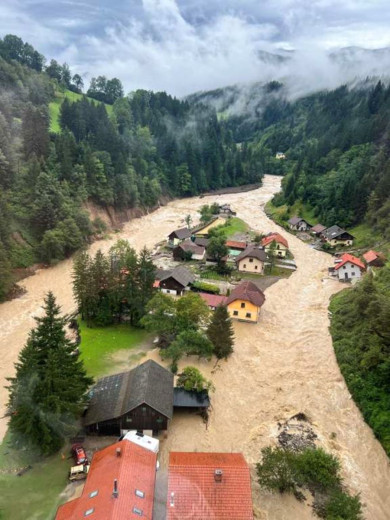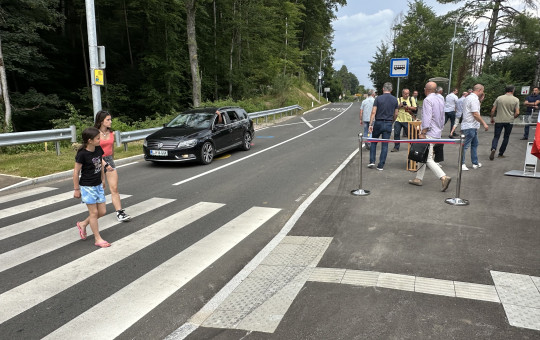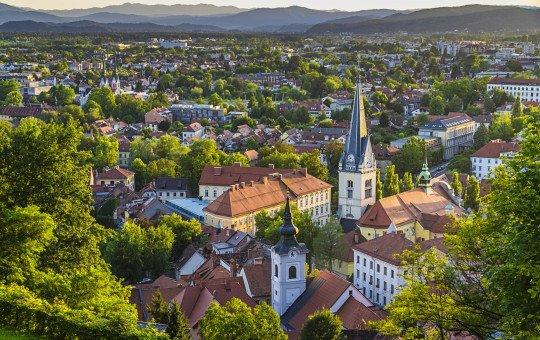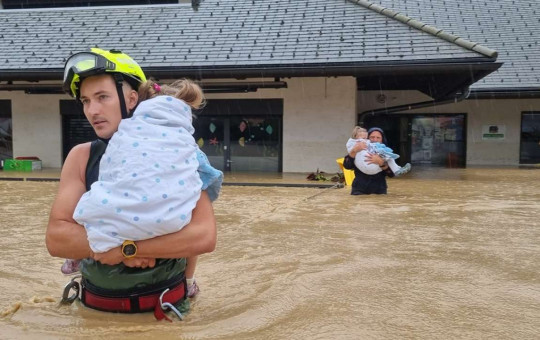Date: 4. August 2025
Time to read: 3 min
Today marks two years since the worst natural disaster in Slovenia, the catastrophic floods that hit two thirds of the country in early August 2023.
The rain began on 3 August 2023 and continued with heavy downpours throughout Friday, 4 August, lasting into Saturday. Most of the rain fell in less than six hours, resulting in catastrophic consequences. Rivers and streams burst their banks, sweeping away bridges, roads and homes. Over 10,000 landslides were triggered. People were forced to flee for their lives, saving whatever little remained of their property. The heaviest precipitation fell mainly in the foothills of the Julian Alps and across the Idrija and Polhov Gradec regions, extending through Gorenjska towards Koroška and the Upper Savinja Valley.
Thousands were left with nothing. Some managed to grab their bags with documents, a few photos, a cat, a dog, a stuffed toy – whatever they could seize before the rushing water flooded or swept away their homes. But many were left with nothing but memories. They lost their homes they had built over decades, gardens they had lovingly tended, and workshops full of tools and knowledge. The floods not only washed away homes and possessions but also took away the safety and comfort that create the feeling of home.
More than 8,000 people had to be evacuated, and seven lost their lives during the floods and the subsequent recovery efforts. The emergency number 112 received nearly 14,000 calls. Direct damage amounted to 3 billion euros, while the total actual damage was around 10 billion euros.
-
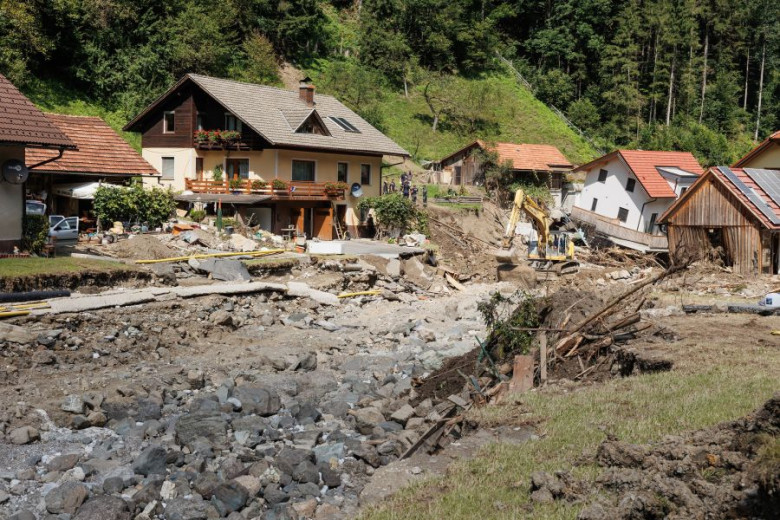 The village of Struge in the Luče municipality was cut off from the world. There were no cars, no road to Solčava, and the upper part of the village had turned into an island. Photo: Nebojša Tejić/STA
The village of Struge in the Luče municipality was cut off from the world. There were no cars, no road to Solčava, and the upper part of the village had turned into an island. Photo: Nebojša Tejić/STA
-
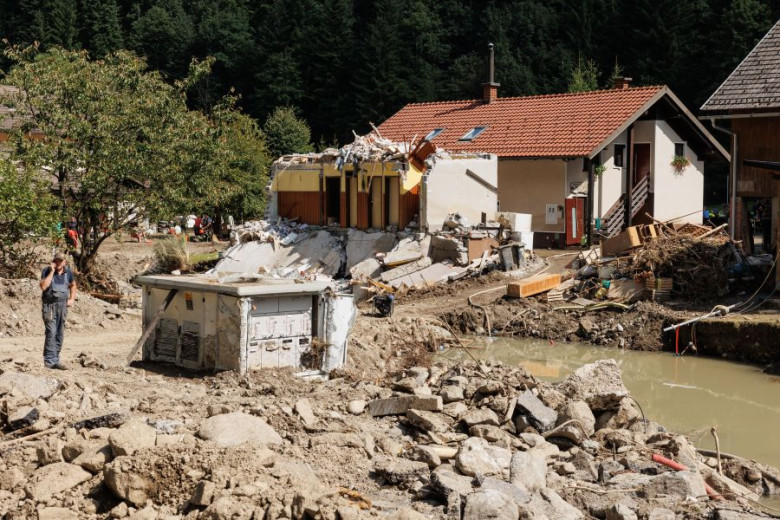 Many people were left homeless by the floods. Photo: Nebojša Tejić/STA
Many people were left homeless by the floods. Photo: Nebojša Tejić/STA
-
 The floods not only washed away homes and possessions but also took away the safety and comfort that create the feeling of home. Photo: Archive of The Government Communication Office
The floods not only washed away homes and possessions but also took away the safety and comfort that create the feeling of home. Photo: Archive of The Government Communication Office
Rapid Response and Solidarity
Although the entire national civil protection system, including part of the Slovenian Armed Forces was on high alert, no one anticipated such catastrophic consequences.
However, the people of Slovenia once again demonstrated exceptional solidarity during the devastating floods. This was one of the most positive aspects of this natural disaster. In the first hours, numerous volunteers, friends, relatives and neighbours from all over the country as well as humanitarian organisations rushed to help.
Up to 8,000 volunteers participated in the clean-up operations every day. The largest number – almost 12,000 – were deployed on 14 August, which the Government declared a Day of Solidarity.
-
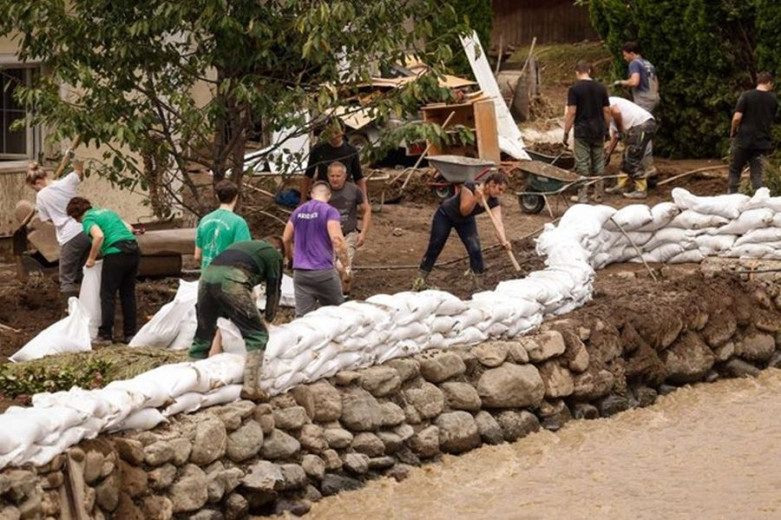 The floods reminded us once again how precious are solidarity and human kindness. Photo: Nebojša Tejić/STA
The floods reminded us once again how precious are solidarity and human kindness. Photo: Nebojša Tejić/STA
-
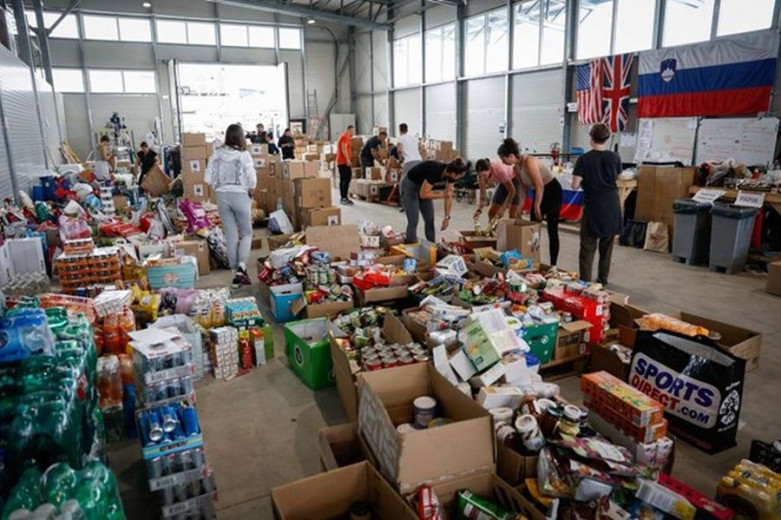 People in the flooded areas also received help in the form of food and water deliveries. Photo: Archive of the Government Communication Office
People in the flooded areas also received help in the form of food and water deliveries. Photo: Archive of the Government Communication Office
-
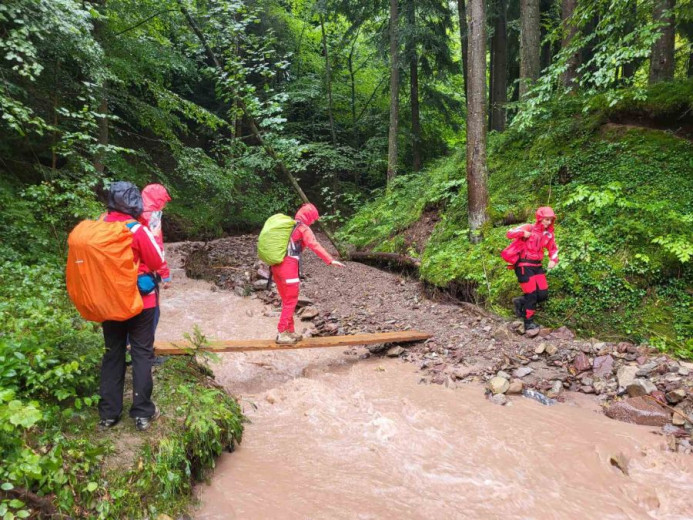 Floods and raging waters completely cut off some homes and communities, leaving rescuers no choice but to reach them on foot. Photo: Špela Mezek
Floods and raging waters completely cut off some homes and communities, leaving rescuers no choice but to reach them on foot. Photo: Špela Mezek
-
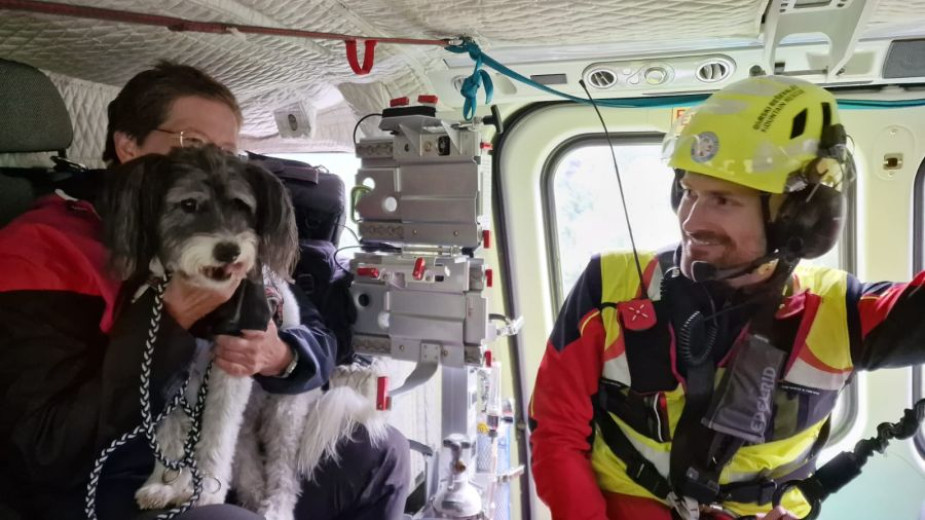 Rescuers helped evacuate all family members during the floods – even the four-legged ones. Photo: Slovenian Police
Rescuers helped evacuate all family members during the floods – even the four-legged ones. Photo: Slovenian Police
Aid also arrived from abroad. Eleven countries provided assistance through the EU Civil Protection Mechanism, while several others offered support on a military-to-military basis and through bilateral agreements. Eight countries supplied a total of 30 excavators, six countries contributed 14 bridges through the EU mechanism, and several provided help with helicopters and dehumidifiers. Additionally, some countries provided financial assistance.
-
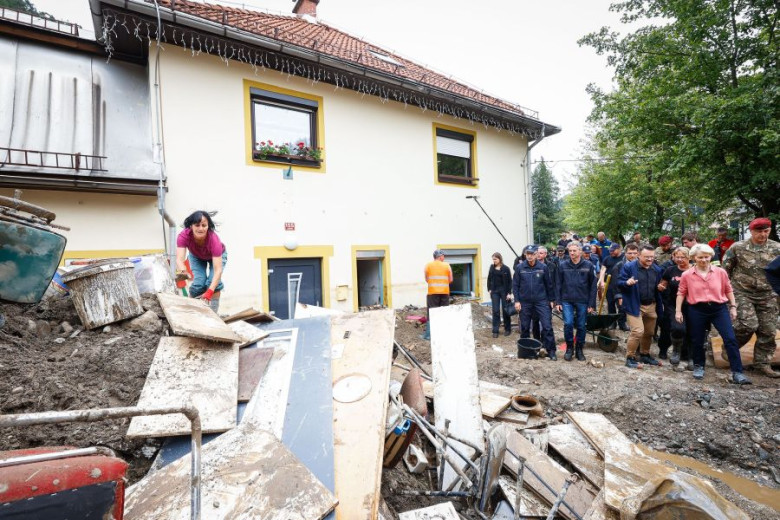 Prime Minister Robert Golob hosted the President of the European Commission, Ursula von der Leyen, during her working visit to Slovenia. She visited to express support and solidarity with all those affected by the floods and to present the EU’s assistance and recovery options. Photo: The Government of the Republic of Slovenia
Prime Minister Robert Golob hosted the President of the European Commission, Ursula von der Leyen, during her working visit to Slovenia. She visited to express support and solidarity with all those affected by the floods and to present the EU’s assistance and recovery options. Photo: The Government of the Republic of Slovenia
-
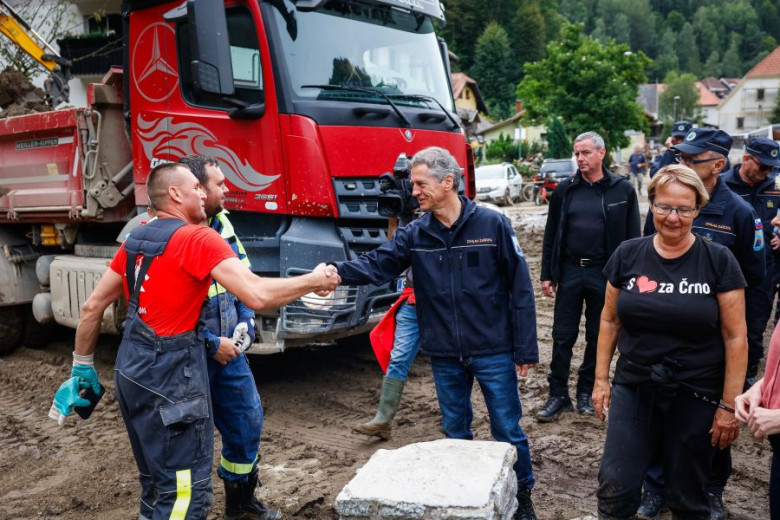 Slovenian Prime Minister Robert Golob shakes hands with firefighters assisting in debris removal after the floods in Črna na Koroškem. Photo: The Government of the Republic of Slovenia
Slovenian Prime Minister Robert Golob shakes hands with firefighters assisting in debris removal after the floods in Črna na Koroškem. Photo: The Government of the Republic of Slovenia
Goal: To Help Everyone who Suffered Damage
The Government responded quickly to the devastating floods, implementing measures to help people and businesses, as well as undertaking extensive repairs to damaged infrastructure. Over the past two years, more than 1.1 billion euros have been allocated for flood recovery, and an additional 2.3 billion euros will be dedicated to repairs in the coming years (2025–2028).
-
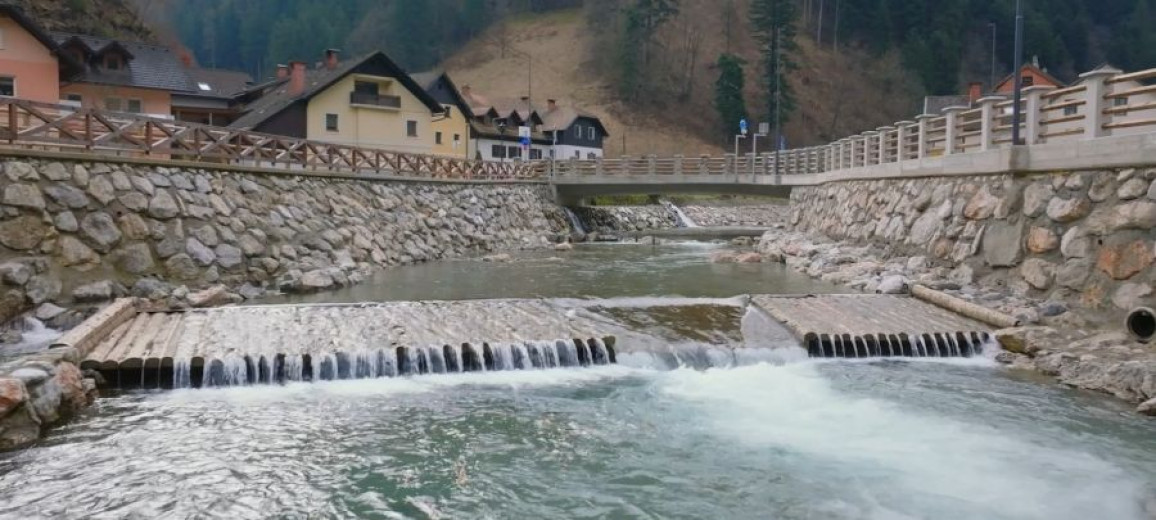 Reconstructed roads, bridges, and landslides have improved accessibility and safety for residents. Repaired water infrastructure structures reduce the risk of future floods. Photo: Ministry of Natural Resources and Spatial Planning
Reconstructed roads, bridges, and landslides have improved accessibility and safety for residents. Repaired water infrastructure structures reduce the risk of future floods. Photo: Ministry of Natural Resources and Spatial Planning
-
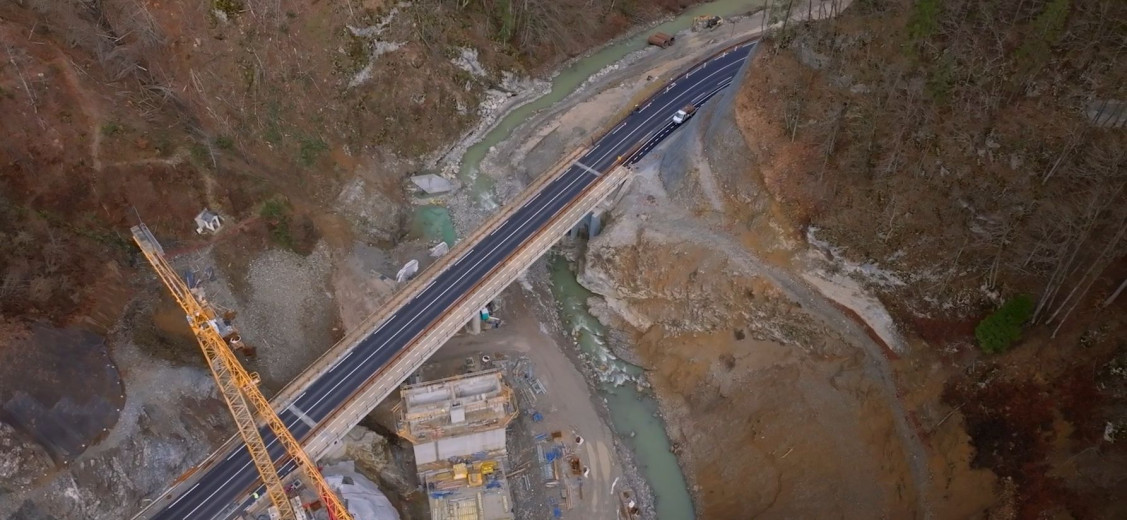 The new infrastructure is more resilient to future weather events. Photo: Ministry of Natural Resources and Spatial Planning
The new infrastructure is more resilient to future weather events. Photo: Ministry of Natural Resources and Spatial Planning
-
 The reconstruction effort is focused not only on restoration, but also on improvements. Photo: Ministry of Natural Resources and Spatial Planning
The reconstruction effort is focused not only on restoration, but also on improvements. Photo: Ministry of Natural Resources and Spatial Planning
Affected property owners are receiving compensation, and some have already started building new homes. For the first time in Slovenia's history, owners of damaged homes received advance payments for urgent repairs. Over 7,350 individuals were paid a total of €35.7 million to help restore their houses and apartments.
Municipalities have received advance payments totaling more than 218 million euros for urgent repairs, enabling faster reconstruction of roads and public infrastructure. The reconstruction effort is focused not only on restoration, but also on improvements, ensuring that new infrastructure is more resilient to future weather events.
By June 2024, all emergency and intervention measures had been fully completed along 850 kilometers of watercourses. More than 1,000 machines and 1,500 workers were deployed on the ground daily—an unprecedented effort that exceeded all projected capacities.
-
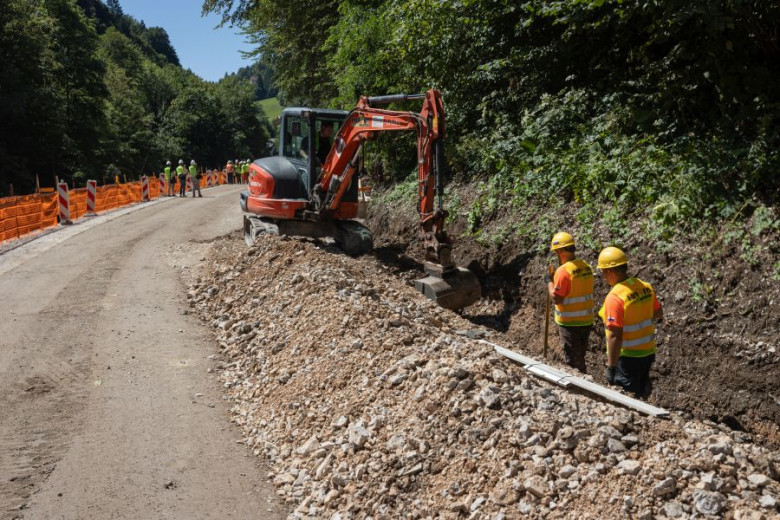 The works, which involve the final remediation of the disaster's aftermath, are still ongoing. Photo: Bor Slana/STA
The works, which involve the final remediation of the disaster's aftermath, are still ongoing. Photo: Bor Slana/STA
-
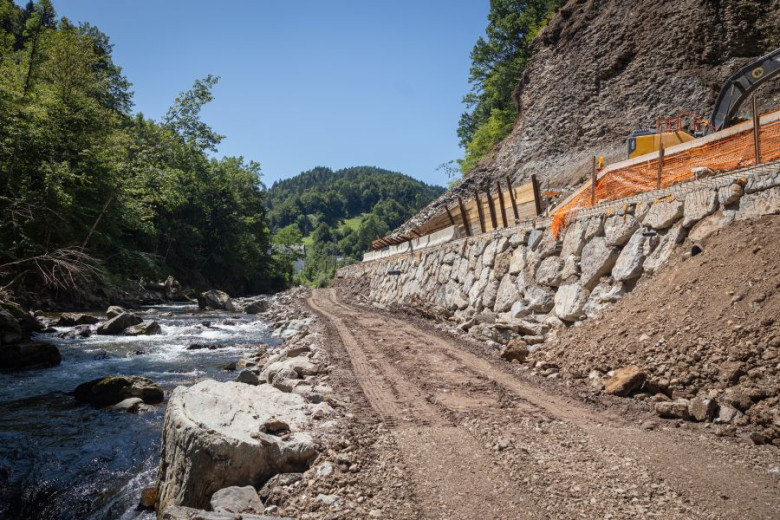 In the Gorenjska region, the August 2023 disaster damaged 52 road sections with a total length of approximately 400 kilometers. Road closures were in place at 80 locations across 47 sections of state roads. Photo: Bor Slana/STA
In the Gorenjska region, the August 2023 disaster damaged 52 road sections with a total length of approximately 400 kilometers. Road closures were in place at 80 locations across 47 sections of state roads. Photo: Bor Slana/STA
The economy has also received support in the form of payments totalling more than 140 million euros, with the self-employed, farmers and shareholders receiving 1,200 euros per month.
Reconstruction will take several years and much work remains to be done. However, the goal is to make people’s lives safer and, above all, to be better prepared and more resilient to extreme weather events caused by climate change.


